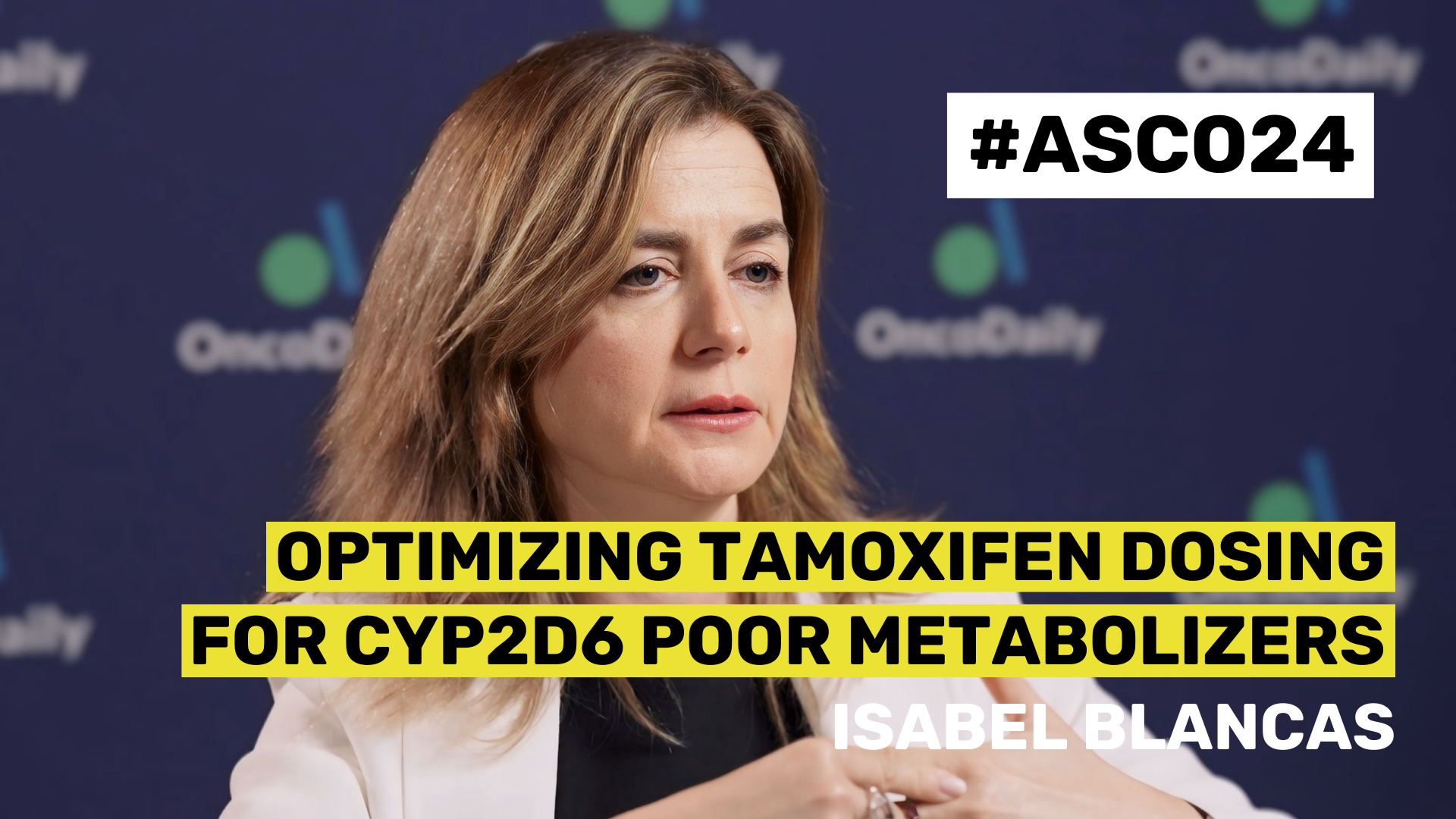The American Society of Clinical Oncology (ASCO) Annual Meeting is one of the largest and most prestigious conferences in the field of oncology. This year, the meeting took place from May 31 to June 4 in Chicago, Illinois. The event gathers oncologists, researchers, and healthcare professionals from around the world to discuss the latest advancements in cancer research, treatment, and patient care. Keynote sessions, research presentations, and panel discussions are typically part of the agenda, providing attendees with valuable insights into emerging trends and innovations in oncology.
This year, OncoDaily was at ASCO 2024 for the first time covering the meeting on-site. We had the pleasure of interviewing researchers who summarized the highlights of their work.
In this video, Isabel Blancas from the Hospital Clínico Universitario San Cecilio, shares insights on ‘Impact of CYP2D6 polymorphisms on adverse events in patients with breast cancer treated with tamoxifen: Insights from an early dose escalation trial in CYP2D6 poor metabolizers‘
Hello, I am Isabel Blancas. I am a medical oncologist and I am the head of the oncology section in Granada, in the Hospital Clínico Universitario San Cecilio of Granada, Spain, and I would like to explain the work that we have been performing. It was a study to see what happens with the increase of dose of tamoxifen from the standard dose of 20mg to 40mg and to 60mg, just to know if the levels of endoxifen that, as you know, is the active form of the drug, is increasing in the blood with the increase of the dose in those patients that are considered poor metabolizers according to the polymorphism of CYP2D6 enzyme.
And what we have seen is that with the increasing of the dose, with the escalation of the dose of tamoxifen, we got finally regular or acceptable levels of endoxifen, but only when we achieved the dose of 60mg.I have to say that after four months, these patients with the enzyme considered poor metabolizer, according to the polymorphism, came back to the regular, to the standard dose of 20mg. We have explored before if there was any difference in survival and we have found no differences in survival between the two groups of extended metabolizer or not extensive metabolizer, so poor metabolizer and intermediate metabolizer.
And what we want to explore here in the present sub-analysis was if there was any difference in the toxicity profile. So, we have after 10-11 years of follow-up, we have a check in all the charts of the patients, the side effects that have occurred. And we have a segregate in four groups, so toxicity for osteomuscular, pain, asthenia, uterine changes and also hot flashes.
And we have seen that the extensive metabolizers have less uterine changes than the group that was (3:40) not extensive.
So, in short and longer period of follow- up. So, as a result, the patients that are poor metabolizers and that we
increase the dose of tamoxifen to get regular levels of endoxifen, they have a
toxicity profile that is different to the extensive metabolizers just for the uterine change.
So, that were all results and I think that could be useful to taking into account for our clinical practice.
More videos and content from ASCO 2024 on OncoDaily.
